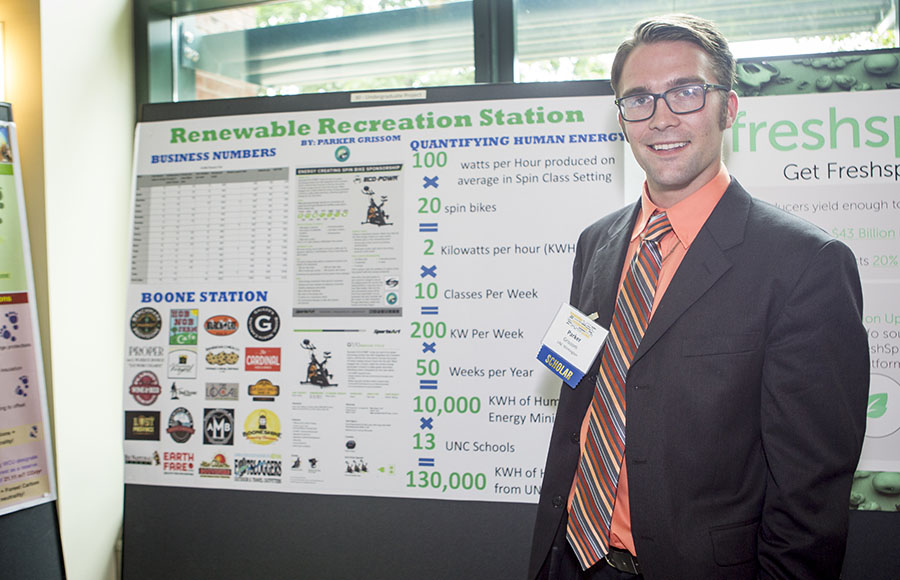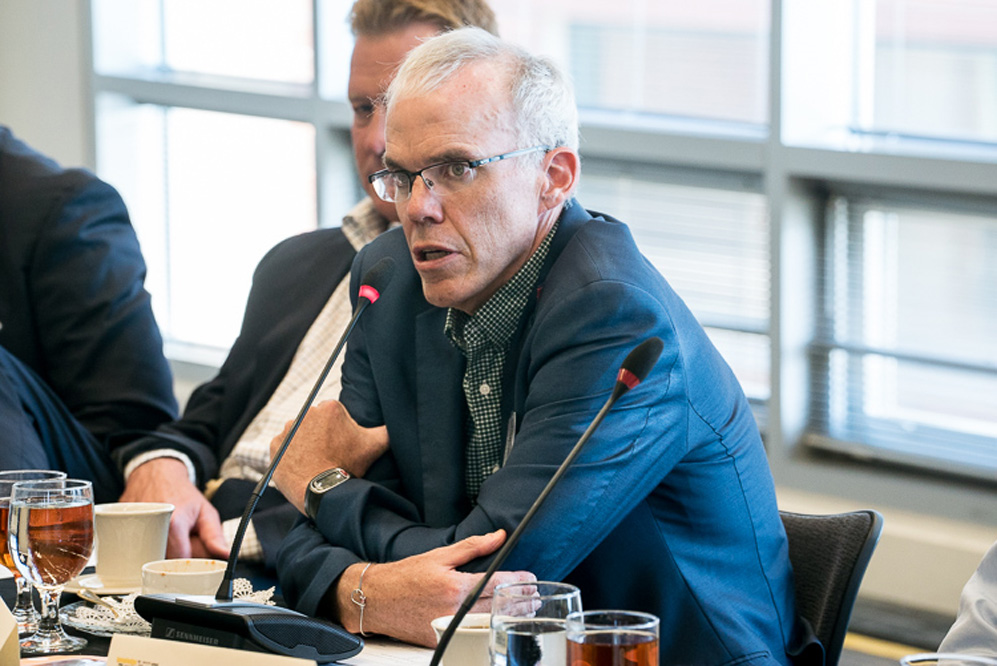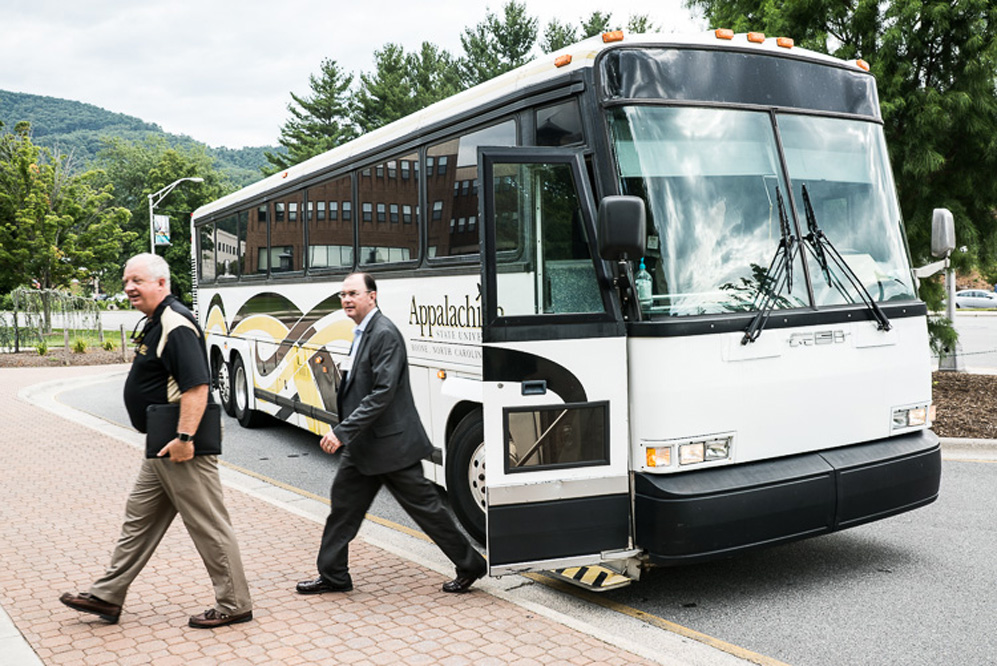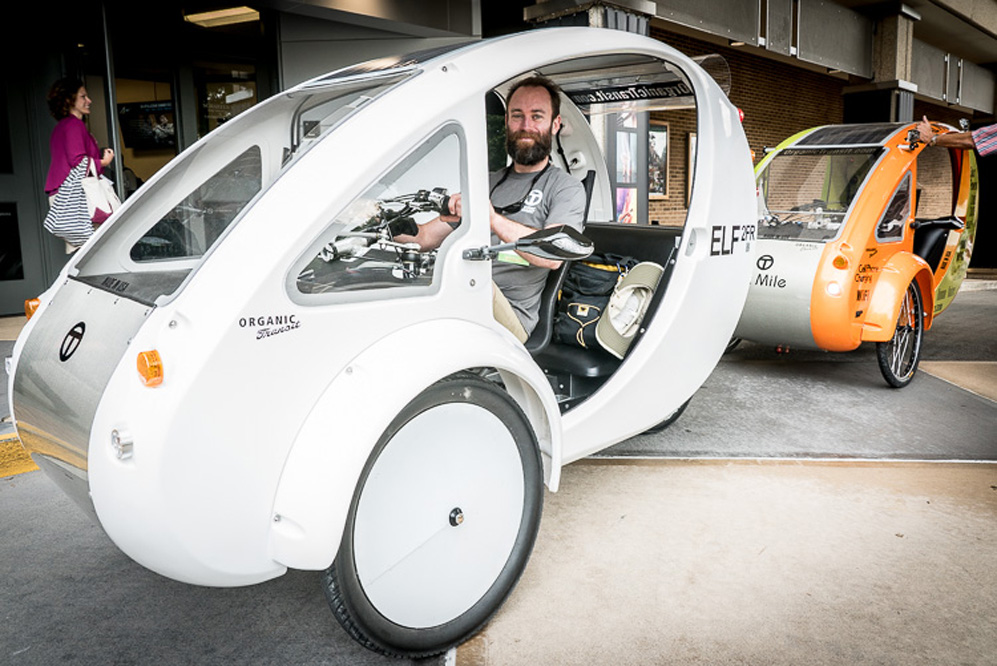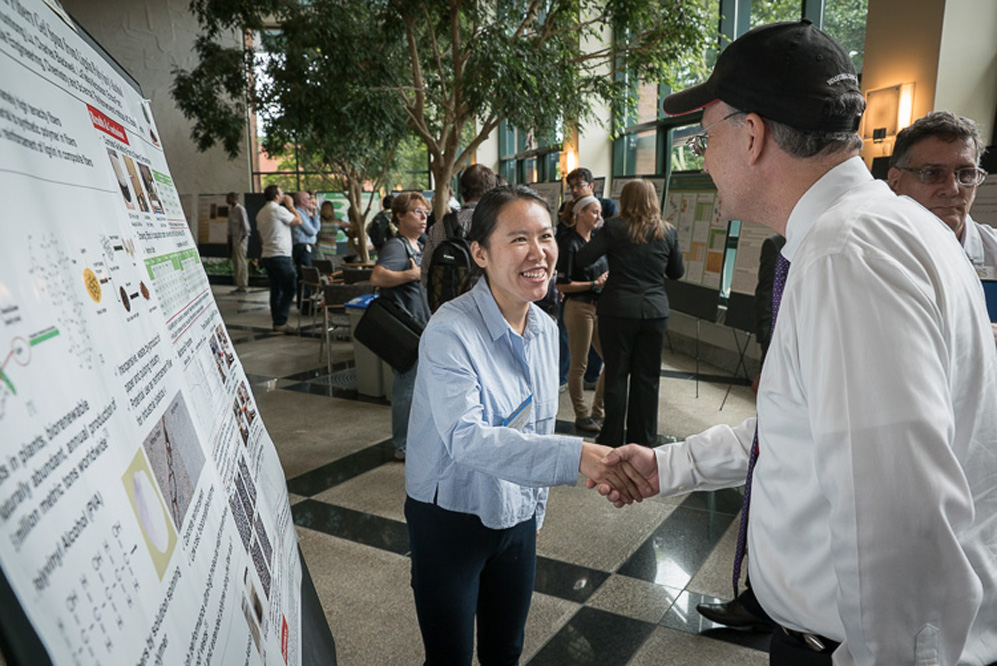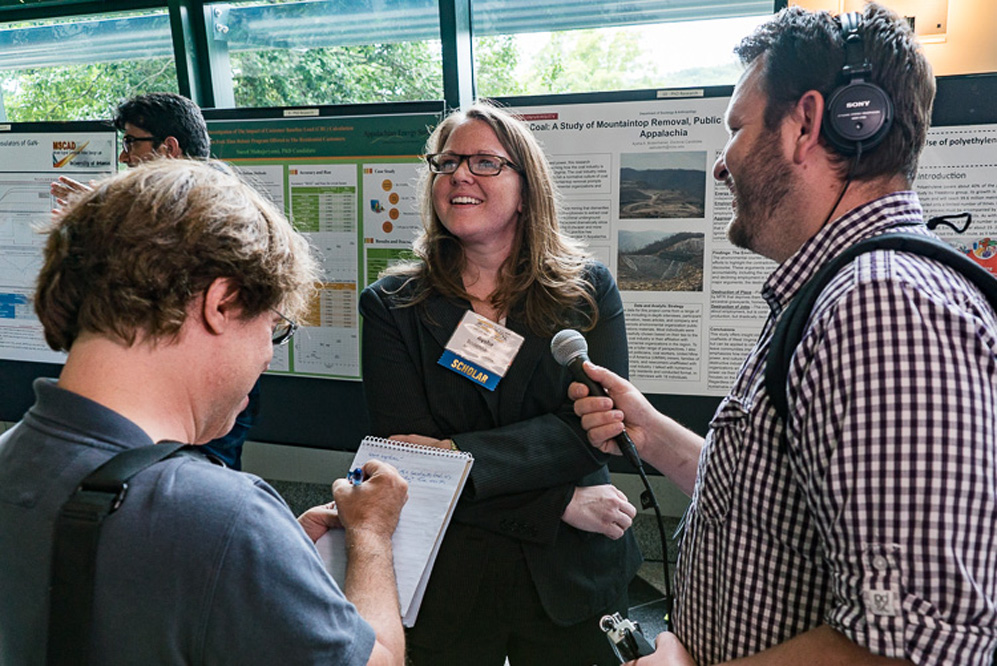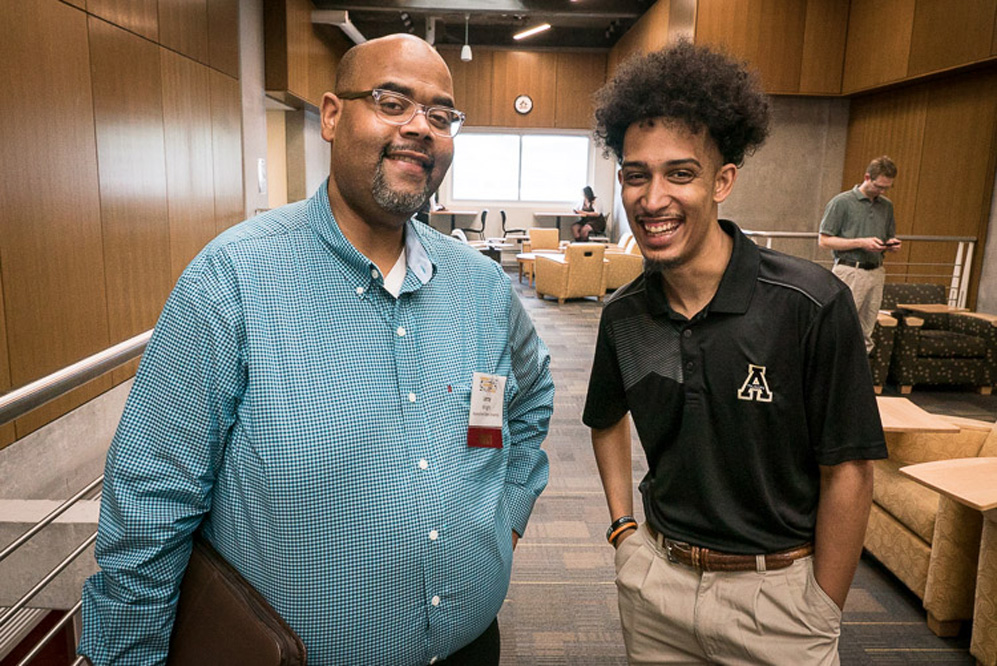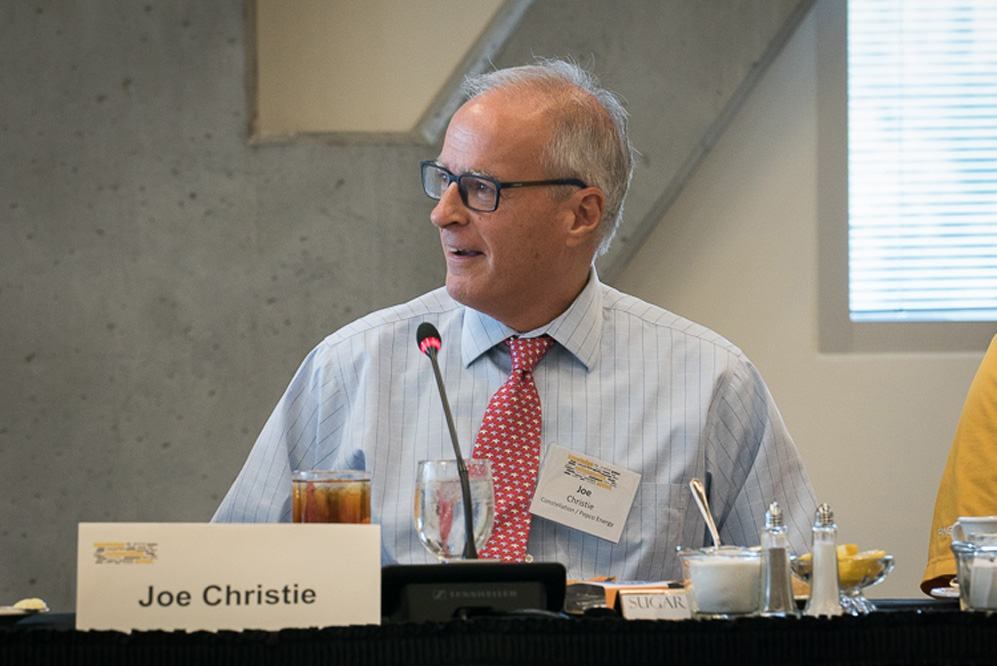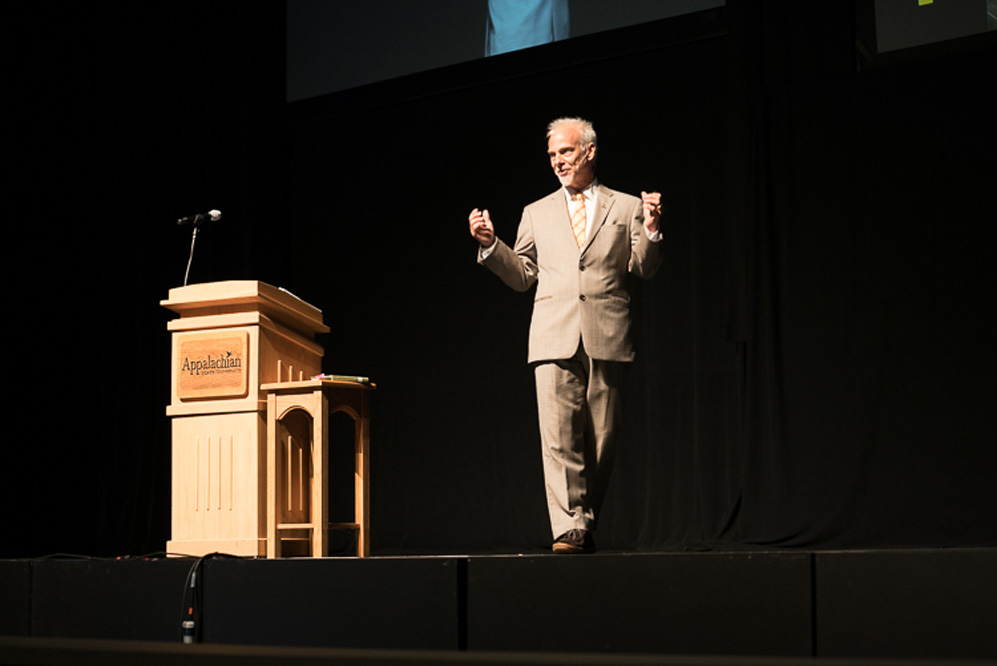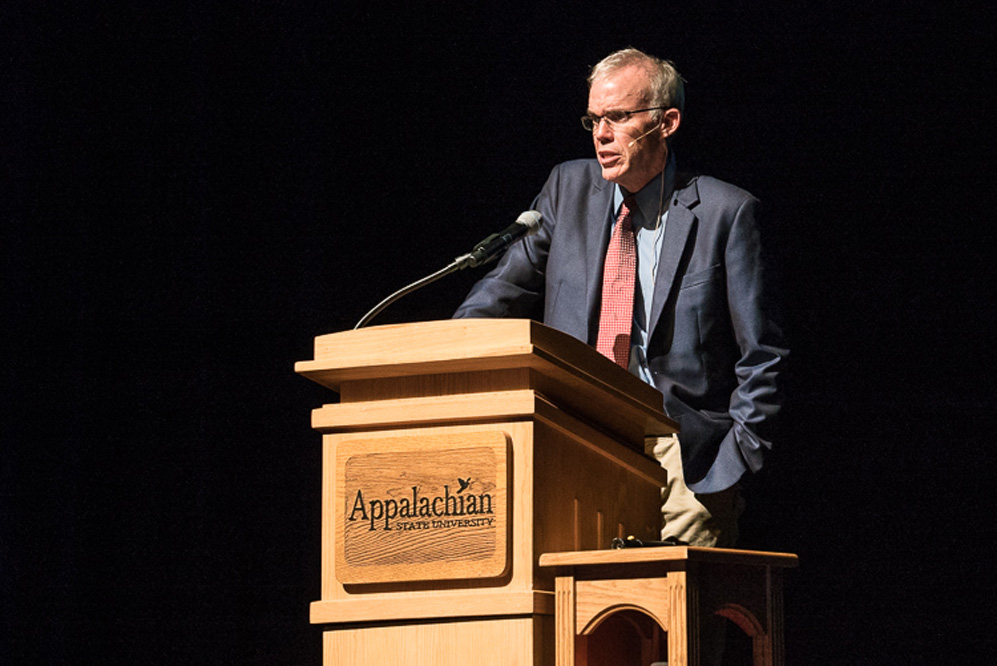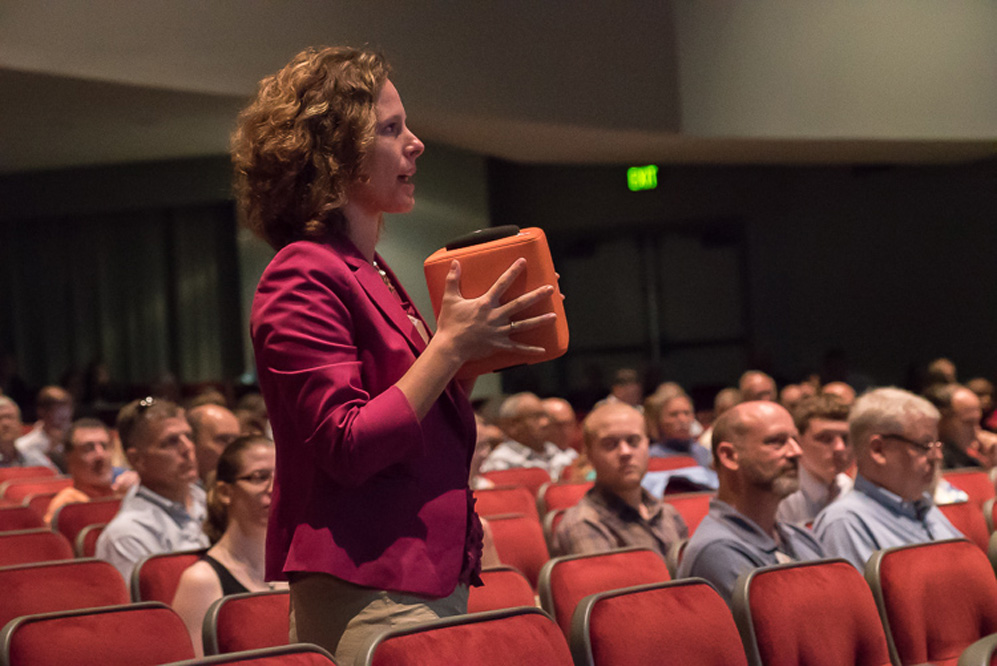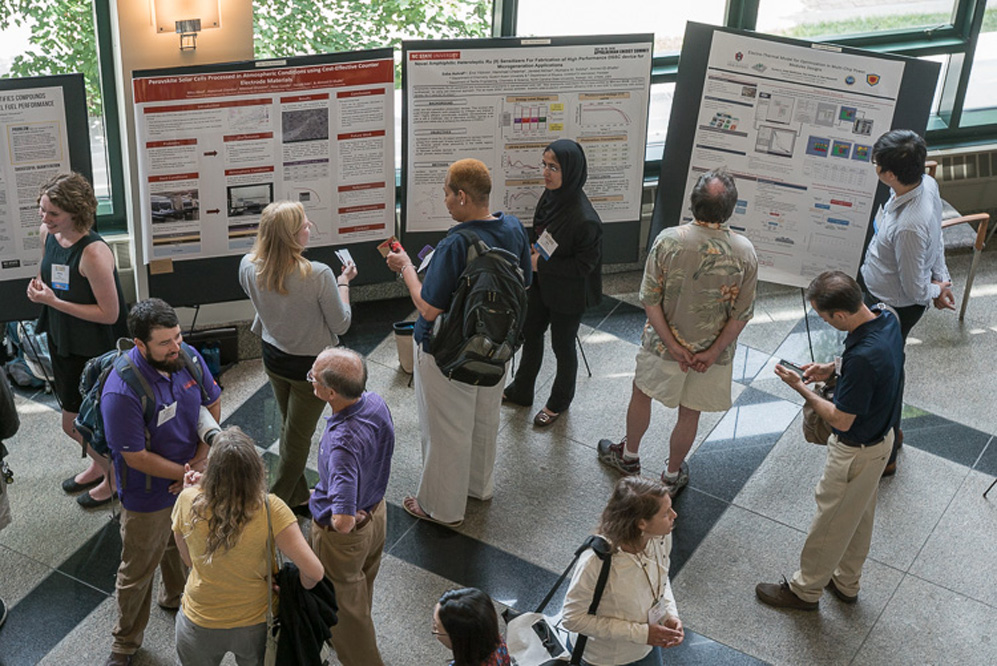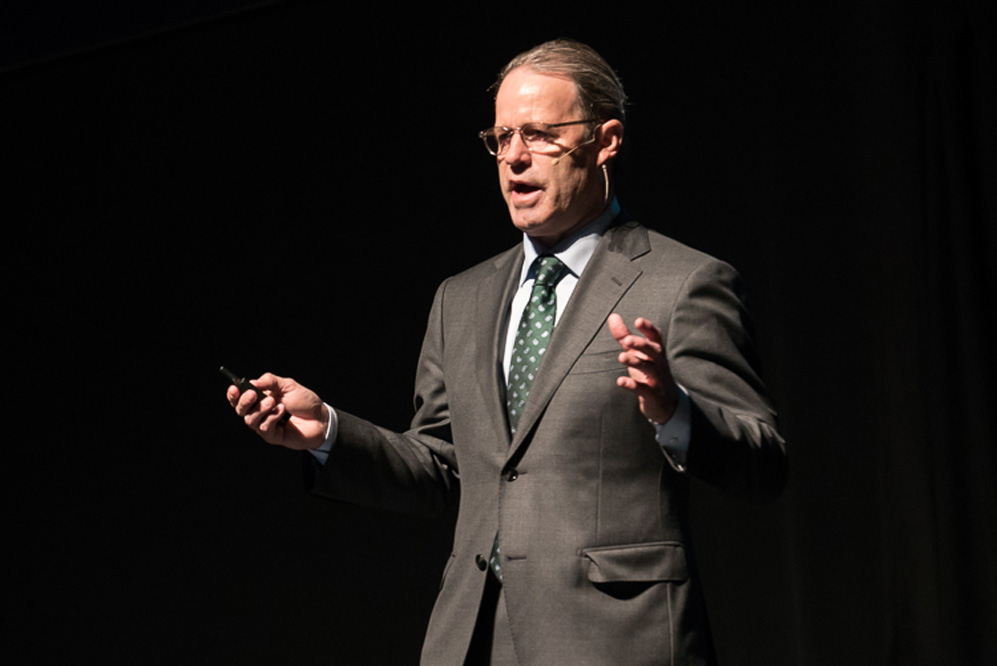A keynote address from internationally known environmentalist and best-selling author Bill McKibben kicked off the 5th Annual Appalachian Energy Summit July 18 at Appalachian State University. McKibben set the tone for the progressive energy conference by stressing the importance of taking action now to ensure a bright and livable future. This matched the conference’s theme of “Knowledge. Collaboration. Action.” and called upon the more than 450 attendees to work together to affect positive change within the energy sector.
Students play an an important part in the summit. Faculty and peers vetted 90 students from throughout the system, inviting them to participate. Their contributions "ensure a brighter future for us all," according to Chancellor Sheri N. Everts.
The first Appalachian Energy Summit was hosted on Appalachian’s campus in 2011, a gathering of representatives from the 16 UNC system campuses and six private schools. Each year since, hundreds of Appalachian Energy Summit participants have gathered in Boone to organize and inspire collaborative efforts around energy innovation. The summit is on track to save North Carolina $2 billion in avoided energy costs by 2025.
The Appalachian Energy Summit has provided a platform through which UNC campuses together with industry partners have avoided more than $499 million dollars in utility costs, representing almost nine billion pounds of CO2e emissions. The UNC system spends an estimated $225 million per year on utilities, or ~$1,000 per student.
On celebrating a milestone five-year anniversary, Everts said, “The Appalachian Energy Summit is accomplishing meaningful progress in support of more sustainable UNC campuses with reduced energy costs and jump-starting a national transformative effort across higher education.”
Describing the summit as “a blend of inspiration, collaboration and perspiration,” she said the summit’s growing engagement of national colleagues is “making real and powerful differences in our state and beyond. Internationally recognized thought leaders keep the conversation fresh and inspire participants to stay focused on the work they are accomplishing each and every day throughout the year and to understand the positive impact their efforts yield for their communities today and for future generations. When the faculty, staff and students at colleges and universities get it right, the benefits can be experienced immediately; however, the benefit to society of having students leave a place that models sound economical, environmental and equitable thinking about our planet ensures a brighter future for us all.”
More than energy savings
The summit is about more than energy savings according to Ged Moody, Appalachian’s special advisor to the chancellor for sustainability. “This year we’ve worked hard to truly leverage the success we have had on the campuses beyond just saving. The important conversations and energy innovations that have been happening in North Carolina can have positively disruptive benefits globally. The university system and Appalachian are creating collaborations and achieving successes that show how higher education can lead first in energy then broaden that scope to address the biggest challenges that face our world – sustainability.”
A member of Appalachian’s Board of Trustees and one of the original energy summit planners, Kenan Smith ’84, concurs. “We have 20,000 students now at Appalachian,” he said. “As we reach out to other systems, other states, other countries. . . suddenly you have 2 to 3 million students talking together. That’s the power for change. That’s big.”
The summit, the only one of its kind in the region, brought together university faculty, staff, students and industry leaders to hear speakers, attend breakout working groups and experience targeted networking sessions. This year there were 40 speakers and panelists in 30 events and sessions.
Attendees also heard from Rocky Mountain Institute founder and chief scientist Amory Lovins, who participated in a post-keynote armchair discussion with McKibben. Other notable speakers included Oberlin College’s David Orr, Pace University’s Karl R. Rabago and the Appalachian Regional Commission’s Earl F. Gohl. Learn more about the speakers
“It is very gratifying to see our more than 450 attendees coming together renewing vibrant friendships and working relationships,” Moody said. “Our mix of plenary presentations, networking receptions and working group sessions served as the canvas for NC's higher education leaders to envision and build upon our clean energy future.”
Goals: educate, reduce, transform, position and create
“The first goal is to educate our students to be leaders of tomorrow,” Moody said. There are 221,000 students in the UNC system. If we can teach them a better way, a more sustainable way, they will invent the future we all hope will exist.”
The remaining four goals are to:
- Reduce and stabilize the UNC system’s average annual energy expenditures
- Transform and stimulate the North Carolina economy
- Position colleagues in the UNC system and private universities as national leaders
- Create a culture of environmental and economic sustainability.
Industry partners shared corporate utility-centered advances and innovation. These speakers included David Gostwick of HOUZE®, Mike Green of NTE Energy, Jeremy Neiderjohn of Johnson Controls, Richard Fort of Clark Nexsen and Chris Halpin of Celtic Energy.
In addition to university and industry leaders, 92 students from 50 different campuses attended the summit, with several giving presentations on sustainability-related topics.
What do you think?
Share your feedback on this story.
Capturing the camaraderie and can-do spirit that is the heart of the annual Appalachian Energy Summit at Appalachian State University is not easy. In 2016, a roster of 40 speakers, close to that many workshops, panels and events, all look pretty much the same from behind the lens. But look closely at the faces and you can see how this group of energy-savvy academics, leaders and students have changed the face of the UNC system, with savings in avoided energy costs to date exceeding $500 million.
About Sustainability and Energy Management at App State
Appalachian State University’s leadership in sustainability is known nationally. The university’s holistic, three-branched approach considers sustainability economically, environmentally and equitably in relationship to the planet’s co-inhabitants. The university is an active steward of the state’s interconnected financial, cultural and natural resources and challenges students and others think critically and creatively about sustainability and what it means from the smallest individual action to the most broad-based applications. The university offers both undergraduate and graduate academic degree programs that focus on sustainability. In addition, 100 percent of Appalachian’s academic departments offer at least one sustainability course or course that includes sustainability, and all students graduate from programs that have adopted at least one sustainability learning outcome. Learn more at https://appstate.edu/sustainability.
About Appalachian State University
As a premier public institution, Appalachian State University prepares students to lead purposeful lives. App State is one of 17 campuses in the University of North Carolina System, with a national reputation for innovative teaching and opening access to a high-quality, cost-effective education. The university enrolls more than 21,000 students, has a low student-to-faculty ratio and offers more than 150 undergraduate and 80 graduate majors at its Boone and Hickory campuses and through App State Online. Learn more at https://www.appstate.edu.
